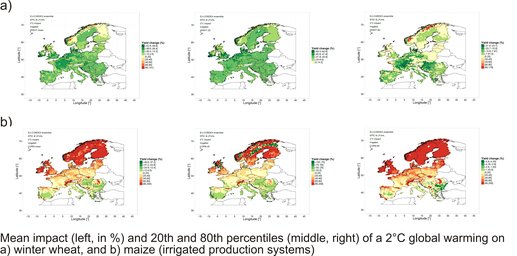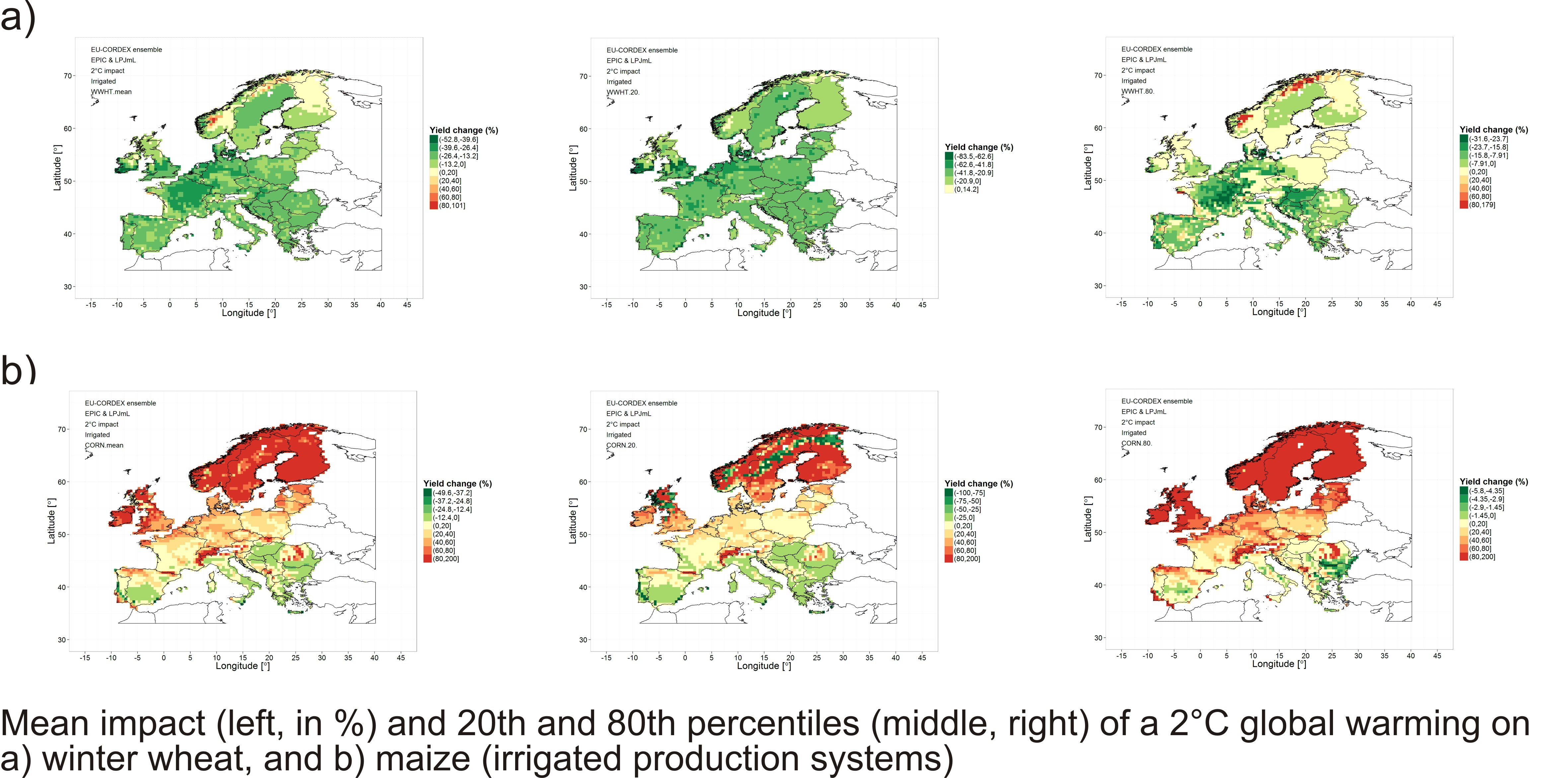Crop Yields - Irrigated
Why is the content of this map important?
Since the demand for crop production is increasing due to population growth and rising bioenergy production, irrigated production systems become increasingly important. The maps demonstrate the changes in crop calorie yield expected for a 2°C global warming under present-day management for irrigated production systems. Crop calorie yield is a measure of food production aggregated from different crops.
Which sectors are affected by this result?
The crop production sector has a strong influence on food production and security, livestock production and bioenergy sector. Irrigation-intensive agriculture may compete for water resources with other sectors, such as industry.
What is shown on the maps?
The maps demonstrate the calorie yield (in 106 kcal ha-1) aggregated from main crops (wheat, maize, rye, barley, rice, sunflower, soya, and rape) for the reference and the 2°C warming periods, and the mean impact. Simulated yields are converted to calories and summed up to the total calorie yield. Water stress limitation was excluded in these simulations. The calorie maps accumulate biophysical impacts that may significantly vary by crops and regions (see further information below). Importantly, winter crops are negatively affected in western and southern Europe while summer crops are positively affected in temperate oceanic and continental Europe. With present-day crop management, a 2°C global warming is equivalent to an overall loss in crop calorie yield by 3.5%.
Details and further information:
A 2°C global warming will impact the crop yields differently. As an example, winter wheat will be rather negatively affected in many regions of Europe due to accelerated phenological development and soil degradation. On the other hand, increased growth rates during winter and early spring may result in rising wheat yields in cooler climates. Summer crops such as maize would be negatively affected in the Mediterranean region, but, in general, they will experience more favorable conditions at higher latitudes and altitudes.
Author:
Juraj Balkovic
International Institute for Applied Systems Analysis (IIASA), Austria
